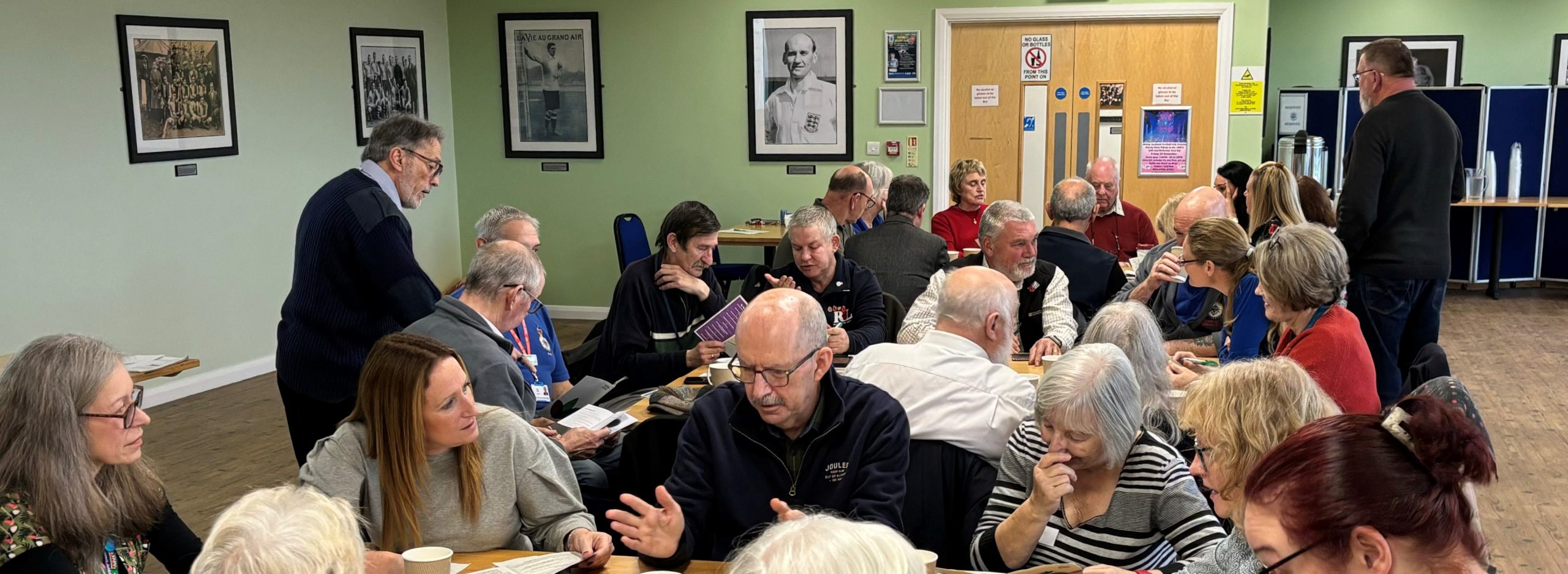
NeuroSAFE technique: how it works, benefits and outcomes | Guest Post by Santis Health
30 July 2025 — jessica-bailey
There are often many options when facing cancer treatment and surgery. It’s important to discuss with your oncology team and raise any questions you might have to find the treatment that is right for you. If you have the option of private treatment, there may be procedures to consider that aren’t available on the NHS. In this guest blog, Santis Health – a private prostate cancer clinic in London – explain how a pioneering technique is enhancing surgical outcomes and helping improve quality of life for men undergoing prostate cancer treatment.

As Professor Christopher Eden, leading surgeon at Santis Health, says, “When you hear the words “prostate cancer surgery,” two worries usually spring to mind: Will the cancer be gone, and will I still be able to function normally afterwards? A modern technique called NeuroSAFE is designed to answer both questions in the operating room itself, giving surgeons and patients far greater confidence that the tumour is out and the nerves for erections and continence are still intact.”
What is NeuroSAFE?
NeuroSAFE (short for “Neuro‑vascular Structure Adjacent Frozen‑Section Examination”) is a rapid, on‑the‑spot biopsy that takes place during robotic prostatectomy. Once the prostate is removed, a dedicated pathology team freezes thin slivers from the edges of the prostates and looks at them under a microscope. Within 20 minutes, they get back to the surgeon with a clear‑cut answer: is cancer touching the edge, yes or no? If it’s no, the delicate nerve bundles that hug the prostate can be safely left alone; if it’s yes, the surgeon can immediately remove a few more millimetres to achieve a clean margin and better cancer control.
Why protecting the nerves matters
Situated around the back of the prostate are two fine bundles of nerves and vessels that control erections, and, to a lesser extent, bladder control. In traditional surgery, these bundles are sometimes sacrificed when the tumour looks aggressive, because the guiding rule is to prevent the spread of the cancer. This new technique refines that decision by providing real‑time reassurance: the surgeon knows exactly where the cancer ends and where healthy tissue begins. As a result, many more men keep their nerves, and with them their sexual function, without letting the cancer grow.
The hidden risk of “positive margins”
After surgery, every prostate specimen is inked and examined. If cancer cells are found on the inked edge, known as a positive surgical margin (PSM), there’s an increased risk (around 5–20%) that the cancer may return in the future. Positive margins may also lead to additional treatments such as radiotherapy or hormone therapy. The new techniques help surgeons reduce this risk while still attempting to preserve the surrounding nerves wherever safely possible.
The benefits of this new technique
NeuroSAFE benefits patients in several important ways:
1. Better nerve preservation without sacrificing cancer control
Surgeons can preserve one or both neurovascular bundles with greater confidence, even in borderline cases, knowing they have real-time feedback from pathology.
2. Improved erectile function outcomes
Evidence shows that men who undergo radical prostatectomy with this technique have a higher chance of recovering sexual function. The NeuroSAFE PROOF trial, published in Lancet Oncology in 2025, found that 32% of men regained erections sufficient for intercourse after 12 months, compared with just 18% in the standard surgery group.
3. No increase in cancer recurrence
Crucially, the same trial also confirmed that using NeuroSAFE does not increase the risk of leaving cancer behind. There was no significant difference in positive surgical margins (27% in the trial group vs 25% in the control group) or PSA recurrence rates at 12 months.
4. More informed surgical decision-making
The trial also showed that surgeons were more likely to attempt and succeed at bilateral nerve-sparing with the new technique (76% attempted vs 45%; 63% successful vs 32%).
5. Maintained urinary continence outcomes
While the primary benefit of the procedure is improved sexual function, continence rates were comparable across both groups.
6. Real-time intraoperative assurance
With the NeuroSAFE technique, it allows for faster, evidence-based decisions during surgery, removing the need to wait several days for final pathology results.
Who might benefit most?
- Borderline cases on MRI: When scans show the tumour close to a nerve bundle, NeuroSAFE can be the deciding factor between removing or preserving those nerves.
- High‑grade cancers in younger men: Even with aggressive tumours, patients who value sexual function may still be candidates because the frozen‑section test keeps oncological safety front and centre.
- Previous biopsy uncertainty: If pre‑operative biopsies give mixed messages about how far the cancer extends, NeuroSAFE offers real‑time clarity.
Important note: the technique requires a hospital with both an experienced robotic surgery team and an on‑site pathology lab able to process frozen sections at speed. Not every centre can offer it yet.
The patient journey
- Pre‑op planning: You’ll have the standard MRI, PSA tests and consultations. If the technique is available, your surgeon will explain how it fits into the plan.
- Day of surgery: After the prostate is removed, the theatre team awaits feedback while the specimen is taken to pathology for freezing and microscopic review.
- Real‑time decision: The pathologist informs the surgeon of the result. If margins are clear, the surgeon proceeds to close; if not, they delicately remove more tissue, often just a few millimeters, to create a buffer.
- Immediate feedback: Whilst still in recovery, your surgeon can inform you whether nerves were saved and margins are clear, meaning a shorter wait for the surgery’s outcome.
- Recovery and follow‑up: Rehabilitation focuses on pelvic floor exercises, gradual return to activity and, if needed, early use of erection‑support medicines to encourage nerve recovery.
Looking ahead
More hospitals in Europe and North America are adopting NeuroSAFE as the evidence grows. Researchers are now exploring how the technique dovetails with single‑port robotic surgery, which uses one small incision. These advances, combined with real‑time frozen‑section feedback, could make future prostate surgery even gentler and more precise.
The information in this article was medically reviewed by the surgical team at Santis Health. To find out more about nerve-sparing techniques, continence recovery, and life after prostatectomy, visit SantisHealth.org.
If you’re looking for private cancer clinics near you, other treatment options available, or support during and after prostate cancer treatment, please search on Cancer Care Map’s homepage using your postcode.
Latest Articles
See all Articles
01 August 2025 — Jessica Bailey
Bridging the Gap: Supporting Veterans in County Durham and Darlington with Cancer Information and Support | Guest Blog byIn this guest blog post, we hear from the County Durham and Darlington Veterans’ Project as they share how they are supporting veterans with cancer information and support, while working to remove the barriers veterans often face when accessing health and wellbeing services. “In County Durham and Darlington, the percentage of people who have […]

30 July 2025 — Jessica Bailey
NeuroSAFE technique: how it works, benefits and outcomes | Guest Post by Santis HealthThere are often many options when facing cancer treatment and surgery. It’s important to discuss with your oncology team and raise any questions you might have to find the treatment that is right for you. If you have the option of private treatment, there may be procedures to consider that aren’t available on the NHS. […]
